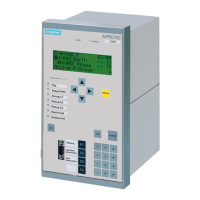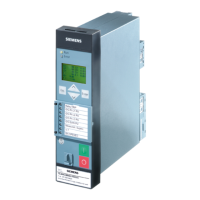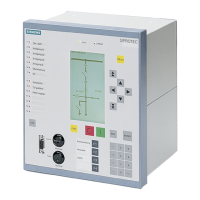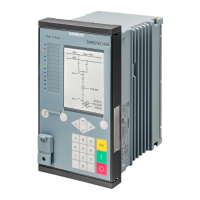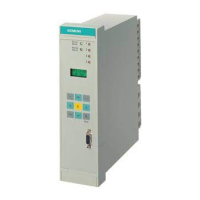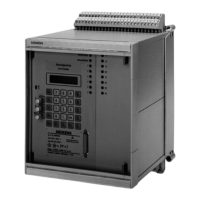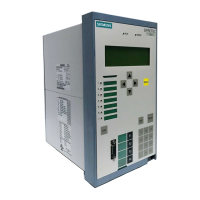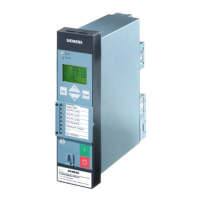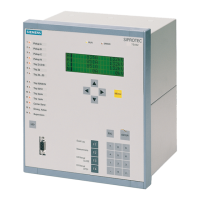2 Functions
160
7SD610 Manual
C53000-G1176-C145-4
The phase–phase undervoltage protection can also be blocked via a binary input
„>Uphph<(<) BLK“. There is an automatic blocking if the measuring voltage failure
was detected or voltage mcb tripping was indicated (internal blocking of the phases
affected by the voltage failure).
During single-pole dead time for automatic reclosure the stages of the undervoltage
protection are automatically blocked in the disconnected phase so that it does not
respond to the undervoltage of the disconnected phase provided that the voltage
transformers are located on the outgoing side. Only such stages are blocked during
the single-pole dead time that can actually initiate tripping according to their setting.
Undervoltage posi-
tive sequence sys-
temU
1
The device calculates the positive sequence system according to its defining equation
U
1
=
1
/
3
·(U
L1
+ a·U
L2
+ a
2
·U
L3
)
where a
= e
j120°
.
The resulting positive sequence voltage is fed to the two threshold stages U1< and
U1<< (see Figure 2-59). Combined with the associated time delays T U1< and T
U1<< these stages form a two-stage undervoltage protection for the positive sequence
system.
Current can be used as an additional criterion for the undervoltage protection of the
positive sequence system (current supervision CURR.SUP.U1<). An undervoltage is
only detected if the current flow is detected in at least one phase together with the un-
dervoltage criterion.
The undervoltage protection for the positive sequence system can be blocked via the
binary input „>U1<(<) BLK“. The stages of the undervoltage protection are automat-
ically blocked if voltage failure is detected („Fuse–Failure–Monitor“, also see Section
2.15.1) or, if the trip of the mcb for the voltage transformer is indicated via the binary
input „>FAIL:Feeder VT“ (internal blocking).
www . ElectricalPartManuals . com
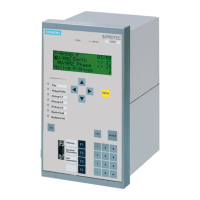
